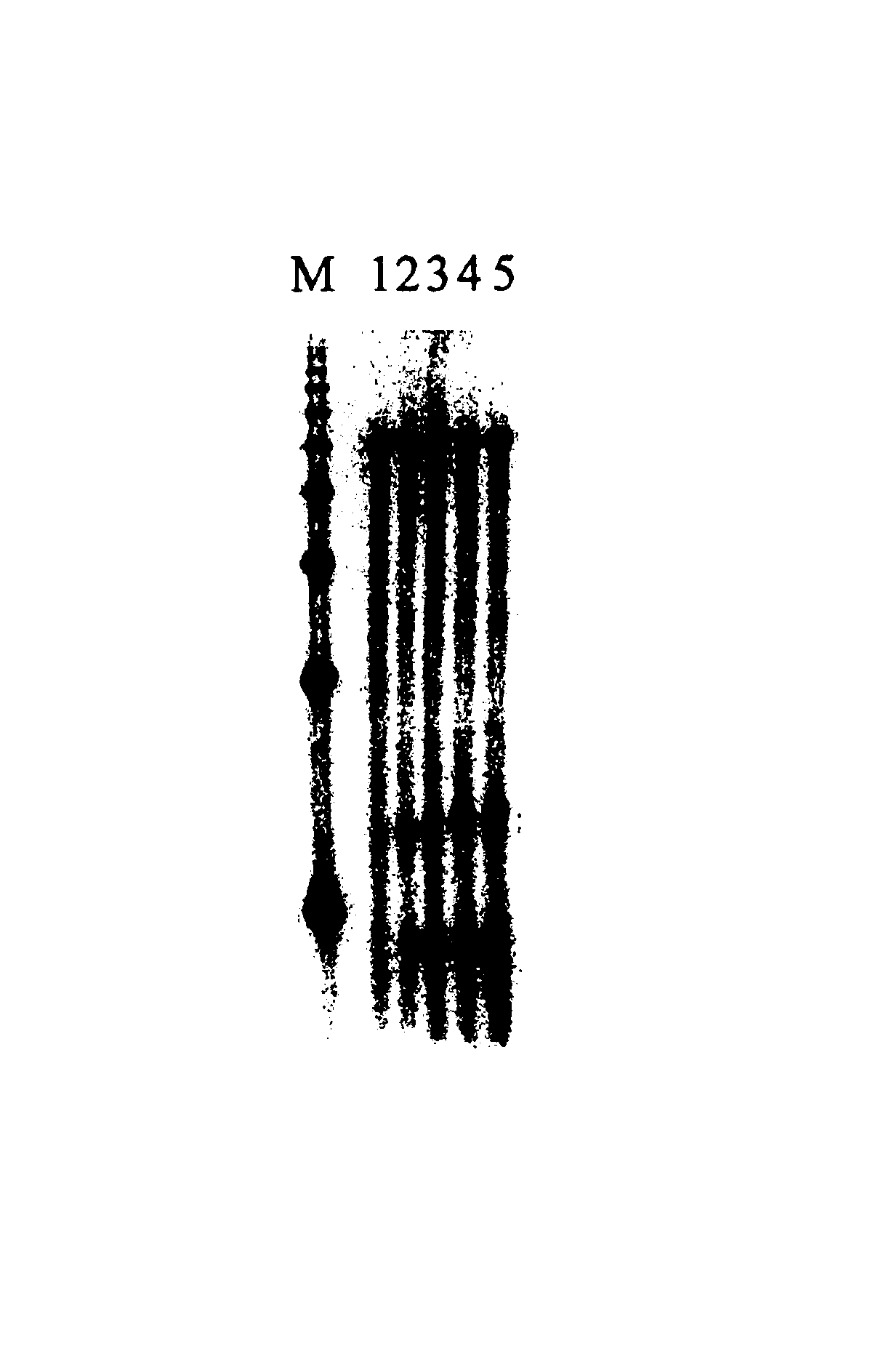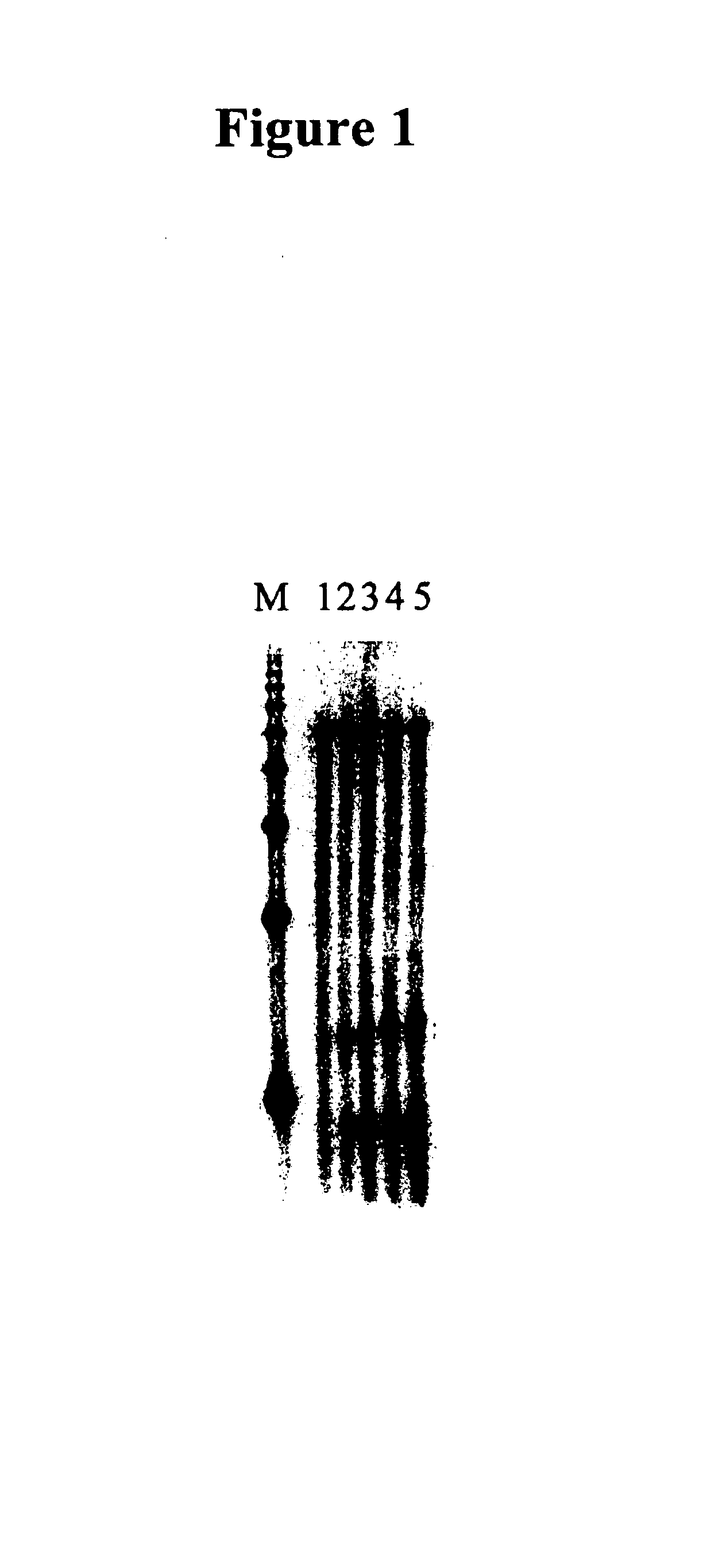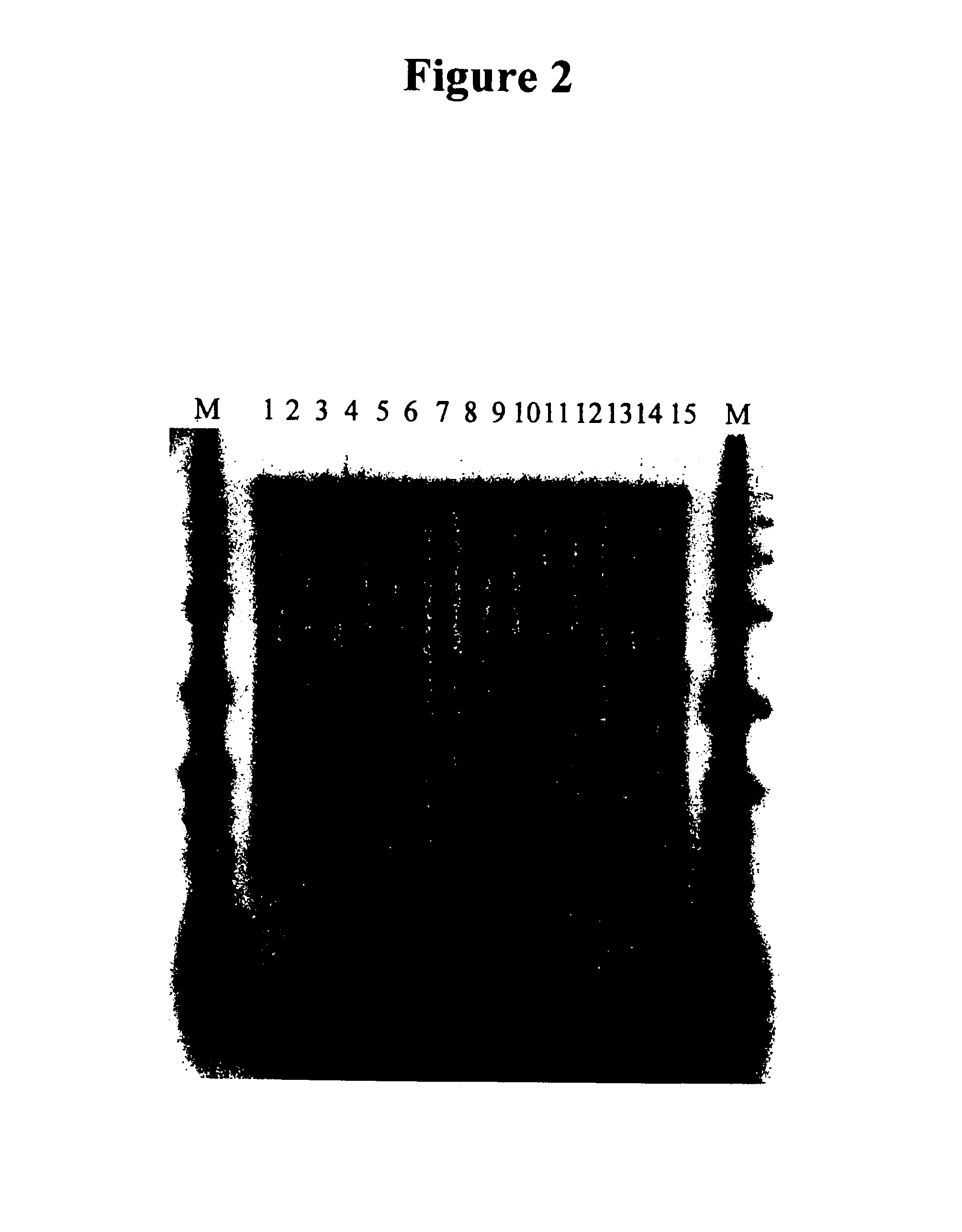cDNA synthesis improvements
- Summary
- Abstract
- Description
- Claims
- Application Information
AI Technical Summary
Benefits of technology
Problems solved by technology
Method used
Image
Examples
example 1
Comparison of First Strand cDNA Synthesis With Varying Ratios of Oligo (dT) Primer / mRNA
[0071]This example compares first strand cDNA synthesis of the MAP4 gene with various ratios of oligo dT primer / starting mRNA. All components are available from Life Technologies, Inc., Rockville, Md., unless specified otherwise.
[0072]The master mix for Superscript II reverse transcriptase (SS II RT) was prepared as specified in Table 1 below
[0073]
TABLE 1Componentμlμl5X SSII RT buffer4280.1M DTT21410 mM dNTP17α-32P dCTP0.53.5Water1.510.5Total volume963
[0074]The master mix for ThermoScript™ II RT (TS RT) (AMV RT αH−βH+) (see WO 98 / 47921) was prepared as specified in Table 2 below.
[0075]
TABLE 2Componentμlμl10X TS II buffer*2380.1M DTT23810 mM dNTP238α-32P dCTP0.59.5Rnase OUT (40 u / μl)119Water1.528.5Total volume9171*10X TS II buffer comprises 50 mM Tris-HCl (pH 8.4), 750 mM KCl, and 75 mM MgCl2.
[0076]The master annealing mix was prepared by adding a 5 Kb MAP4 mRNA, oligo(dT)25-30 and water to 5 tube...
example 2
Comparison of First Strand cDNA Synthesis Under Standard and Hot Start Conditions
[0083]This experiment was designed to compare first strand cDNA synthesis of the MAP4 gene with standard reaction and hot start conditions.
[0084]The annealing mix was prepared by mixing 1 μg of MAP4 mRNA and biotinylated Not I oligo(dT)25 primer ((Biotin)4 GACTAGTTCTAGAT CGCGAGCGG CCGCCCTTTTT TTTTTTTTTTTT TTTTTTTT (SEQ ID NO:1); see WO 98 / 51699) in the desired molar ratio of oligo (dT) / mRNA of 0:1, 1:1 or 15:1 in thin-walled PCR tubes and bringing the volume up to 10 μl with water. If several tubes are identical, they may be made in one batch and aliquotted accordingly. The annealing mix was kept on ice.
[0085]The master mix for Superscript II reverse transcriptase (SS II RT) was prepared as specified in Table 5 below.
[0086]
TABLE 5Componentμlμl5X SSII RT buffer4280.1M DTT21410 mM dNTP17α-32P dCTP0.53.5SSII RT (200 u / μl)17Water1.510.5Total volume1070
[0087]The SS II RT master mix was then divided into two ...
example 3
Synthesis of Double Strand cDNA by Controlling the Reaction Temperature and the Concentration of Salt and RNase
[0094]This example describes the synthesis of double stranded cDNA by controlling the reaction temperature and the concentration of salt and different ribonuclease (RNases) during the treatment of the cDNA / mRNA hybrids after first strand cDNA synthesis.
[0095]First strand cDNA was synthesized as described above in Example 2 and digested with either RNase I or RNase A as further described below.
[0096]RNase I digestion of first strand cDNA was done by re-suspending the first strand cDNA in 180 μl of water and 20 μl of 10× RNase I buffer (100 mM Tris-HCl (pH 7.5), 50 mM EDTA, 2 M sodium acetate). 2.5 units of RNase I (1 unit / μg mRNA) were added and the mixture was mixed well. The RNase I digestion mixture was incubated at 25° C. for 30 minutes and extracted with phenol / chloroform once. The supernatant was precipitated with 1 μl of glycogen, 100 μl of ammonium acetate and 800 μl...
PUM
| Property | Measurement | Unit |
|---|---|---|
| Temperature | aaaaa | aaaaa |
| Temperature | aaaaa | aaaaa |
| Temperature | aaaaa | aaaaa |
Abstract
Description
Claims
Application Information
 Login to View More
Login to View More - R&D
- Intellectual Property
- Life Sciences
- Materials
- Tech Scout
- Unparalleled Data Quality
- Higher Quality Content
- 60% Fewer Hallucinations
Browse by: Latest US Patents, China's latest patents, Technical Efficacy Thesaurus, Application Domain, Technology Topic, Popular Technical Reports.
© 2025 PatSnap. All rights reserved.Legal|Privacy policy|Modern Slavery Act Transparency Statement|Sitemap|About US| Contact US: help@patsnap.com



